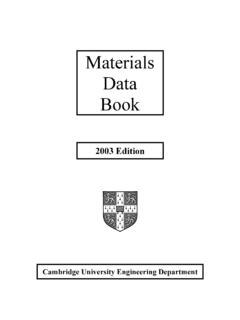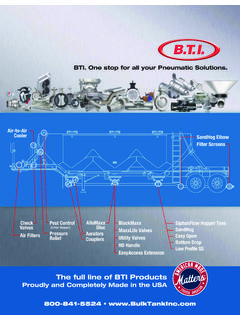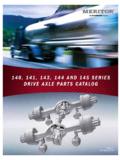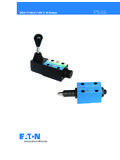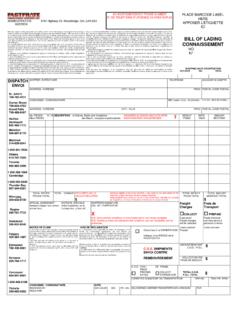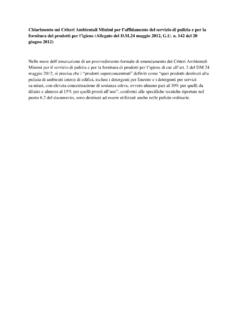Transcription of BIOMET 3i’s ENCODE COMPLETE RESTORATIVE SYSTEM
1 PAGE 1 T O N Y P R E S T I P I N O C D T G A R Y M O I R R I S D D S A R T I F E X D E N T A L B U F F A L O G R O V E , I L . A L E X A N D R I A , V I R G I N I A BIOMET 3i s encode complete restorative system SIMPLIFYING IMPLANT DENTISTRY There is a saying if it sounds too good too be true it probably is. I think you will find that does not apply here. Of all the CAD/CAM implant abutments on the market today, BIOMET 3i s ENCODE COMPLETE is unique and has something beneficial to offer. It truly is the easiest way to restore an implant.
2 A 53 year old male presented with tooth #13 missing due to decay (Figure 1). After discussing the options between conventional crown and bridge and implant dentistry it was decided to place a 3i implant, utilizing the ENCODE COMPLETE RESTORATIVE SYSTEM due to it s ease of use , reduced chair time, and lower fees. The first step in restoring an implant with ENCODE COMPLETE is that the surgeon must use an ENCODE Healing Abutment (Figure 2) instead of a standard healing abutment. The difference between these healing abutments and others is that the ENCODE Healing Abutment has notches inscribed on the top surface describing the implant s platform diameter, the implant s interface connection type (internal or external), and the implant s orientation and depth. The dentist must take a full arch impression of the ENCODE Healing Abutment (Figure 4 & 5).
3 Before taking the impression make sure the healing abutment screw is tight by using a hand driver ( Figure 3) followed by taking a radiograph to confirm seating of the abutment. It is not likely the screw of the healing abutment will come loose but if it does this will cause the healing abutment to rise due to the hydraulic pressure introduced when the impression is taken. It is crucial that there are no bubbles, rips, tears, or imperfections in this impression around the implant site. The reason for this is the scanner, which is used in this CAD/CAM technology, may read these imperfections as something else. The requirement for FIGURE 1 FIGURE 2 FIGURE 4 FIGURE 5 FIGURE 3 PAGE 2 E N C O D E C O M P L E T E :SI M P L I F Y I N G I M P L A N T D E N T I S T R Y this impression is that the healing abutment be at least 1 mm supra-gingival (Figure 6).
4 An impression coping is not indicated in the production of a final ENCODE Abutment. Simply take a clean, clear, full arch impression of the healing abutment, followed by a full arch impression of the opposing arch and a bite registration. The dental technician will pour up the impression with a low expansion die stone, free of bubbles (Figure 7). Articulate the models on an articulator within the confines of the mounting plates (Figures 8). Only articulators compatible with Addesso Split Plates, like the Stratos 100 articulator, can be used to replicate articulation at the milling center. For this reason, articulators do not need to be shipped, only the working models. Filling out the prescription is a vital step in the ENCODE COMPLETE production process and knowing your dentist will help you with this process. How far sub-gingival should margins be buccal, interproximal, and lingual?
5 Is a chamfer or shoulder margin preferred? What should the abutment walls be parallel to and to what degree of taper? Do you want to stretch any of the emergence profiles? These questions are filled out on the ENCODE COMPLETE workorder form and shipped out to 3i s PSR department in West Palm Beach Florida. In the PSR department at 3i a dental technician reads the prescription, scans the models and the abutment is designed virtually. Upon request, the j-peg s and/or e-drawings of the abutment are sent to your e-mail address to be reviewed and/or revised if need be (figure 9). After approval of the j-pegs the milling machine can get to work (figure 10). First the abutment is milled out of a block of titanium (Figure11) with a precise BIOMET 3i interface. Then the working model is revised to fit an analog in it s proper orientation.
6 At the same time the milling is done on the working model to create the proper socket shape for the emergence profile portion of the abutment to fit in (Figure 12), which the computer knows by the scanning of the opposing arch and the adjacent dentition to the implant as well as the cross arch dentition. After completion of the robot model and the abutment, they are mailed back to the dental laboratory. A porcelain fused to high noble crown was fabricated over the ENCODE abutment and polished (Figures 13 & 14) by the laboratory. The doctor removes the healing abutment, seats the implant abutment (Figure 15) and takes a radiograph to verify At Least 1mmAbove GingivalMargin 360 We need to see the codes For correct margin placement tissue needs to heal on collarT ISSUEE ncode articulatorEncode articulatorModels must be mounted insidethe confines of this boxFIGURE 6 FIGURE 7 FIGURE 8 FIGURE 11 FIGURE 9 FIGURE 10 FIGURE 12 FIGURE 13 FIGURE 14 PAGE 3 proper interface seating.
7 After torquing the abutment screw to 20 Ncm (CERTAIN) or 32 Ncm (EX-HEX) the crown is cemented (Figure 16). Needless to say this sounds easy. And it really is. Eliminating the need for an impression coping to fabricate the restoration of an implant will change implant dentistry. It will also save chair time, cost, and it will reduce the amount of components needed to restore implants, making the process less confusing, at the same time providing the patient with a high quality patient specific restoration. In the last year at Artifex Dental we have fabricated over 200 ENCODE abutments and crowns with excellent results. BIOMET 3i ENCODE COMPLETE RESTORATIVE SYSTEM offers to the dentist a simple, less confusing way to restore an implant, for this reason Artifex Dental offers a low, flat fee for the ENCODE abutment and its crown, hoping to further simplify the restoration of an implant.
8 FIGURE 15 FIGURE 16 ENCODE COMPLETE : SIMLIFYING IMPLANT DENTISTRY
